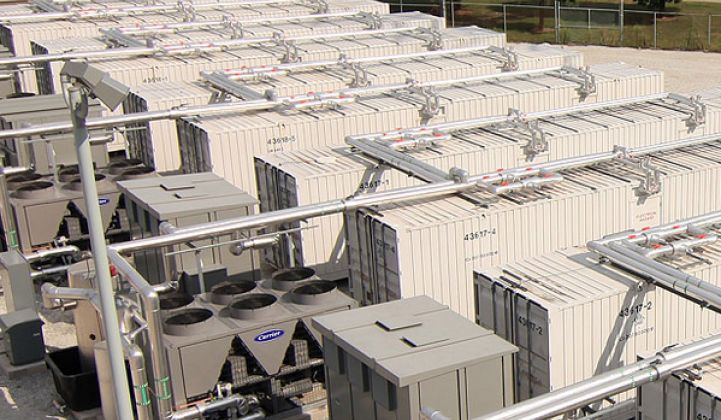After eight years in the energy storage business, AES is pushing its way into Europe. Recent ground-breaking ceremonies at Kilroot in Northern Ireland and in Zeeland province in the Netherlands have signaled the start of its push into the region.
AES has operated generation assets in Europe for more than two decades, but the U.K. and Dutch energy storage deployments will be its first on the continent. Both are aimed at helping to balance supply and demand by providing Primary Control Reserve (PCR) for transmission grid operators -- TenneT in the case of the Netherlands and SONI in Northern Ireland.
The 10 megawatts of interconnected storage (20 megawatts of resource) in each location will allow greater integration of renewable energy.
In the case of the Netherlands, AES will bid to supply PCR in two European markets each week. The first simply covers the Dutch grid, but the second also includes those from Austria, Germany and Switzerland.
The company has chosen to enter the European storage market because the continent’s grids are facing renewable energy integration challenges, aging grid infrastructure, plant retirements and a rise in opportunities for behind-the-meter applications. All of those factors “play to our strengths,” said Steve Corwell, AES' vice president for Europe. “This is the future of the modern grid.”
According to AES, Europe's storage market is still in its infancy compared to the U.S. market. “You hear about a lot of demonstration projects in Europe, and fewer actual commercial deployments," said Corwell. As a result, he believes the scope for additional renewables is severely limited. “We want to elevate that ceiling," he added.
AES has recently relocated its European HQ from a London suburb to Amsterdam. “Whenever we are in the media, we get inquiries from all sorts of operators asking how our storage can support their wind and solar,” said Corwell, who also praised the country’s policies on renewables and energy storage.
The Netherlands Energy Storage Roadmap developed by DNV GL, Berenschot, and TU Delft earlier this year, a document outlining the opportunities for energy storage in the country, is an example of how the country “gets the need” for storage, said Corwell.
"The government also has a role in encouraging and facilitating new business models for the use of storage. It can also remove unnecessary obstacles to energy storage for trading on the operational reserve market, and it can encourage the deployment of energy systems behind the meter in such a way that they not only serve the end user, but also help make the entire system more efficient," concluded the authors of the report.
Both the U.K. and Dutch arrays are scheduled to go on-line at the end of this year. AES hopes that once the Kilroot site proves its worth in helping to reduce electricity bills, it will be expanded to 100 megawatts of interconnect and 200 megawatts of resource.
AES also sees both European deployments acting as a “shop window” for third parties that may want to buy and operate its Advancion arrays under a licensing agreement with AES. The company has already succeeded in promoting its Advancion lithium-ion battery array in Chile and the U.S., with total deployments of 86 megawatts -- equivalent to 172 megawatts of resource.
The company has an interest in providing more than PCR to Europe’s electrical grid in the future. In the U.S., it has already shown that energy storage systems can replace thermal peaker plants.
According to Corwell, the technology not only makes economic sense, but it is also quicker and easier to deploy than a traditional gas-powered plant. Once the market conditions are right in Europe, the company hopes to show that its technology makes sense there, too.



